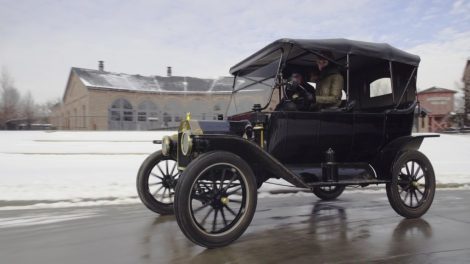It’s not often that I feel charitable enough to admit that progress can sometimes be more like standing still. But, I know when I am licked. After 50 years of pushing laundry and drycleaning carts around numerous plants, I know real progress when I see it. This progress I speak of is in mechanical equipment that has made our lives easier as plant owners. Today’s machinery and solvents are a far cry from the flammable solvents when I entered this industry in 1965. Research shows that 73 years ago the age of fire regulations was just beginning. Most in part from a tragic fire in a Chicago plant that killed five. The predecessor to DLI at the time NADC (National Association of Dyers & Cleaners), went into action to write and promote new regulations for NAFDA (National Fire Protection Agency), in employee’s preventing fires, usually from a solvent explosion or an over active boiler. Generally, it was from fumes of a drycleaning machine solvent tank waffling into the boiler room to unite with the boiler’s burner. Smoking and slothful habits attributed also.
What makes today’s equipment so much safer was the beginning of your drycleaners association continuing on today, as it did 70 + years ago, to make the equipment we use safer. My hat is off to the machinery people. Today’s average drycleaner/spotter person scarcely knows anything about what our associations did for us so many years ago. Isn’t it a shame how little people think of history today? It slays me to see the indifference schools have for history. I remember sharing this kind of history that every drycleaning student needs to know today in my classes over the past 28 years. When I began using a Marvel double pocket 50-lb. drycleaning machine in 1970, the only thing I had to fear was not loading both pockets. The result was for the machine to pull up roots from its moorings and dance down the hallway. No fun! The only thing damaged was my ego.
You see, like many of you I grew up with antiquated machinery and processing that was arduous and slower than molasses in the winter time. Nothing like the progress and process that we now know. Try dragging 100 pounds of wet blue jeans out of a washer and transferring them to an extractor to wring out the water. Talk about hard work! A veteran then had to know just how much water to sling out of those jeans or shirts to make the balance of moisture just right. Leaving too much water in the garments made it take twice as long to dry on the press, slowing production down. Extracting too much water resulted in limp wrinkled shirts and jeans. The balance was important. Today we enjoy the luxury of high speed washers that do it all for us. Thus saving in labor and allowing an employee to be able to handle other chores. Not to mention the safety factor.
Henry Ford Started It All
I recently watched a biography of Henry Ford and how he started the mechanized process of productivity. Henry Ford organized the approach to making things “move along” in a plant – even a drycleaning plant. The principles are the same up to a point. Whoever worried much about production costs and percentages against the gross? Today we watch it like a tree full of owls. The evolution of drycleaning and laundry equipment since the early 1900’s is amazing. Even since 1970 I have seen much improvement. The national, state and local EPA regulations beginning in some states around the time of the latest and most restricting kind began in 1990 with the CAA (Clean Air Act). The equipment people stepped up to the plate and did their job to create and manufacture safe and convenient machinery for our plants. I remember 30 years ago the ADA (Arizona Drycleaners Association) plant had a major, major solvent spill when a filter unit busted loose and leaked into a neighboring fast food place and freaked everyone out. Five people were carted off to the hospital when they were overcome by perc fumes! It was an incident exactly like this that led California and New York to begin regulations that required drycleaning machines to have a berm or wall built around the machine to contain up to 100% of any spilled solvent. The regulators in California then began a move towards the development of a containment tray with all new drycleaning machines that would actually contain what they described as 110% of any wayward solvent leaks. Yes, we all benefit from history lessons.
I shall conclude this month’s writing about equipment to say thanks again to the machinery companies in their quest for better, safer, easier to use drycleaning equipment. Advances in pressing equipment have been made also but a finely finished garment is still reliant upon the presser’s abilities to fine detail. However, the equipment is easier to use. Isn’t history amazing?
I’m headin’ to the wagon now, these boots are killin’ me!

